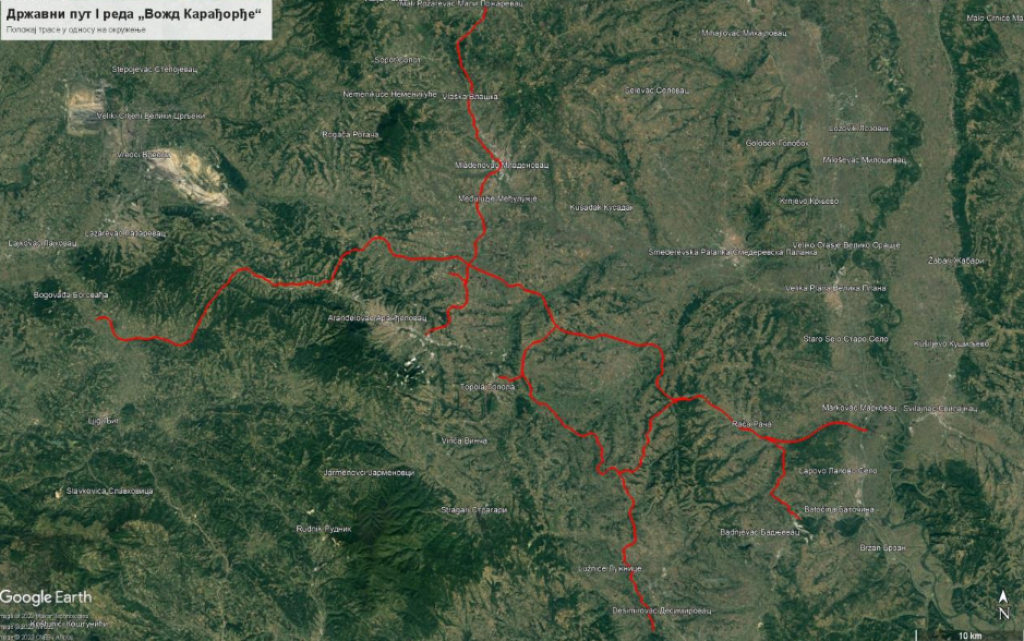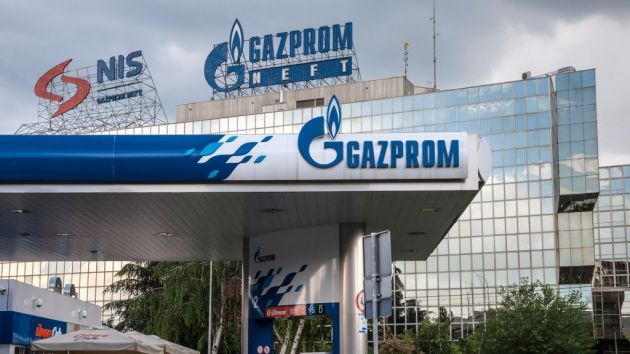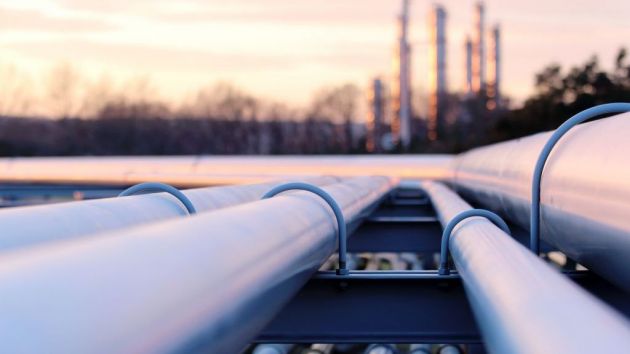First works on Banat highway, first passengers at unfinished BAS and new breaking of deadlines – 2024 Retrospective, investments in TRANSPORTATION
Source: eKapija
 Friday, 17.01.2025.
Friday, 17.01.2025.
 11:43
11:43
 Friday, 17.01.2025.
Friday, 17.01.2025.
 11:43
11:43
Illustration (Photo: Milos Muller/shutterstock.com)

Therefore, at the beginning of 2024, the imminent relocation of intercity traffic from the old to the new Belgrade Bus Station (BAS) was announced, as were the concretization of the high-speed rail project to Nis, the first vehicles on the Pakovrace-Pozega section for the autumn, as well as the opening of new kilometers of other corridors... Some of these announcements were realized, others remained just announcements until further notice. Rescheduled for another year ahead.
Read below to find out which traffic topics were expectedly and unexpectedly in the top ten most read.
1. Expressway (or highway) Vozd Karadjordje
For years, the state has been announcing that, in addition to the Milos Veliki highway, we will also get the Vozd Karadjordje highway. This second highway, when it comes to its future profile, caused a lot of confusion because the authorities described it as both a highway and an expressway, until all the dilemmas, as it seemed at the time, were resolved in March when the Agency for Spatial Planning and Urbanism announced the public review of the draft spatial plan for the special-purpose area of the Vozd Karadjordje state road infrastructure corridor. It then became clear that Vozd Karadjordje would be built in the profile of an expressway.
Location of the state road corridor (Photo: Nacrt prostornog plana područja posebne namene infrastrukturnog koridora državnog puta Vožd Karađorđe)

The plan for this road for speeds up to 100 km/h envisaged a road route 163.75 km long with three tunnels and more than 130 bridges, or a road with two traffic lanes for each carriageway, with each traffic lane having to be at least 3.5 m wide, and each carriageway having a special niche/lane 3.5 m wide and 30 m long, periodically at about 2 km along the route, for the emergency stopping of vehicles.
At that time, politicians from Topola boasted that the route of this road would be the longest one through their municipality, and in July, some other politicians in higher positions than those from Topola announced that the construction of the first section of Vozd Karadjordje, from Lazarevac to Arandjelovac, would start by the end of this year, but of course nothing came of it. And to make sure that there is at least something on the topic of Vozd Karadjordje in 2024, Serbian President Aleksandar Vucic made an effort by expressing in October his expectation that the construction of the first kilometers of the “Vozd Karadjordje highway” would begin in the summer of 2025. However, just four days later, the then minister of transport, Goran Vesic, made another, more optimistic announcement – the construction of the expressway, as he said, would begin in the spring. It is difficult to guess when it will actually begin...
2. Highway to Montenegro
The announcement of the construction of yet another highway, as well as the publication of yet another Draft Spatial Plan for a Special Purpose Area, attracted attention this year, and this is a public preview that was announced for the plan of the future highway from Pozega to Duga Poljana (and further to Boljare in Montenegro).
Therefore, in June 2024, it was announced that the future highway, one part of which, from Pozega to Duga Poljana, began to be built in 2022, would run along the Moravica Valley, between the slopes of Javor and Golija, across the Pester Plateau to the border with Montenegro. It was specified that the highway corridor would begin after the “Prilipac” interchange, which belongs to the Pozega-Kotroman highway section, extend southward along the Moravica River valley over flat and slightly hilly terrain, while after Ivanjica it would enter the mountainous area and pass between the slopes of Javor in the west and Golija in the east and climb to the Pester Plateau, along which it would extend southward to Duga Poljana and the Boljare border crossing.
(Photo: Nacrt PPPPN/screenshot)

The planned highway route is divided into eleven sections, with a total length of 106.3 km.
There is still no precise information about the start of construction of this highway, about which the authorities have been announcing for years that will require large financial resources.
3. Opening of the new BAS and waiting for the completion of the station building
More than six years ago, the unfinished Prokop (which is still in that state) was put into operation, and the functional Main Railway Station in the center of Belgrade was closed. The year behind us saw the same scenario, only this time it concerns intercity, international and suburban bus traffic. At the end of September, the old BAS was closed, and a new one was put into operation in Block 42 in New Belgrade, which received almost all the important facilities except for one equally important one - the central station building. The new BAS is largely operational, although it is true that passengers are served in a small annex and with platforms for suburban lines on which a canopy is not planned for the foreseeable future (perhaps the authorities are guided by the idea that “it will not be a problem for passengers from suburban settlements if they get a little wet or if the wind blows right through them”).
However, not only the opening and the first months of operation of the new BAS, but also the sweltering, hot summer, during which transport operators and especially passengers from the east, southeast and central Serbia sweated with pain, caused great public discontent and criticism when they heard about the plan of the authorities in the city and the republic that in the future buses from these directions would not be allowed to enter the city via the highway (now the motorway through Belgrade) or cross the Gazela Bridge, but have to drive around and around via the Belgrade Bypass to the new Jug stop (still unfinished, eKapija's note) and that they would no longer be allowed to stop at the city stops along the highway on the way to the station.
The station with the planned station building (Photo: BAS)

Passengers were seething after these announcements, wondering what was the point, and the experts supported them. In the end, the city of Belgrade and the republic did not want to admit that they rushed and went too far in their desire to force passengers to use the new station, which would thus benefit from charging too expensive platform tickets. They did not admit it, but they did give up on the plan to allow buses to enter via the bypass and ban the crossing of Gazela, stating that this was the result of “additional traffic analyses.”
In the end, the old BAS was demolished, the unfinished new one largely serves passengers, and they and the transport companies continue to use the city's stops for intercity buses - as has been customary for decades. The start of construction of the new station building, for which a tender worth around EUR 48.1 million was announced at the end of last year (which has since been stopped) is still very uncertain.
4. Pozarevac-Golubac Expressway
One of the roads that has been under construction in Serbia for years, and the dates for its opening have been pushed little by little, is the Danube Corridor from Pozarevac to Golubac. Let us remind that when the construction of the Danube Corridor began, it was indicated that the first section of a total of three would be completed by the end of 2023, and the entire corridor by November 2024. In the summer behind us, Prime Minister Milos Vucevic nevertheless announced a new deadline for the completion of this road - September 2025.
Towards the end of last year, the state leadership announced the opening of certain sections of this corridor to traffic, but at that very time, news arrived that one of the overpasses on the Pozarevac-Veliko Gradiste-Golubac expressway had collapsed.
However, a few days later, the Basic Public Prosecutor's Office in Veliko Gradiste confirmed that there was no collapse or demolition of any building, bridge or overpass at the construction site of the Pozarevac-Veliko Gradiste-Golubac high-speed railway section, in the town of Djurakovo-Popovac, as reported by the media.
The construction of this high-speed railway began in November 2021, and more than EUR 330 million will be invested. The contractor is the Chinese Shandong Hi Speed Group, and the subcontractors are from Serbia.
5. Belgrade-Nis high-speed railway
Announcements, announcements... Serious works on the future Belgrade-Nis high-speed railway have been announced for years, but even in the year behind us, much about this railway has remained in announcements only. However, what really attracted attention was the news that the Serbian Spatial Planning and Urbanism Agency had announced the public access to the Draft Amendments to the Spatial Plan for the Special Purpose Area of the Belgrade-Nis Railway Infrastructure Corridor. As stated in this document, the basic concept of the modernization and reconstruction of the Belgrade-Nis railway is to form a modern double-track railway for mixed (passenger and freight) traffic and speeds of up to 200 km/h along its entire length.
(Photo: Print screen / ESIA)

The immediate subject of the amendments to the Spatial Plan was the creation of conditions for the modernization and reconstruction of the existing railway on three sections with a total length of about 109 km for traffic at speeds of up to 200 km/h. These are the sections: Velika Plana-Gilje (length of about 50 km), Paracin-Stalac (length of about 20 km) and Djunis-Trupale (length of about 38 km). One of the main innovations, however, was that the amendments eliminated 10 stops on the route of the future high-speed railway, which will be 230 kilometers long.
When it comes to more concrete steps regarding this railway, in the past year the Delegation of the European Union to Serbia, on behalf of the buyer, the Serbian Railway Infrastructure, issued a call for expressions of interest for supervising the construction of the Belgrade-Nis high-speed railway.
Earlier this year, the then Director of the Serbian Railway Infrastructure, Nebojsa Surlan, announced that the high-speed railway was expected to be built in 2029, and a little later, the then minister Goran Vesic emphasized that the first works should begin in late 2024, but in October he also rescheduled the start of construction to late 2025. In the meantime, a tender for the construction of the works was announced on several occasions in 2024, and a few weeks before his resignation, Vesic announced that he expected tenders for the construction of the high-speed railway from Belgrade to Nis to be held in late 2024 and early this year. The value of this project, as announced, will be EUR 2.75 billion.
6. Pakovrace-Pozega Highway
One of the more infamous Serbian traffic record-holders in terms of rescheduling or moving deadlines for the completion of construction is definitely the section of the Milos Veliki highway from Pakovrace to Pozega. If announcements were to be relied upon, at least those made in early 2024, drivers would be driving along this section in large numbers. Because, in this case too, the then minister of construction and transport, Goran Vesic, was almost explicit in early March last year that traffic would start flowing there by October (of course, also this past October). Whether because Vesic emphasized at the time that he had visited the works and personally witnessed their dynamics, or just because he hoped that it would finally happen, this news attracted a lot of attention from readers.
The truth on the ground was, however, significantly different, as even laymen could easily conclude that the contractors had a ton of work to do, that some sections of the future highway under construction had not even been completely broken through and cleared. Thus, at the end of August, the Roads of Serbia admitted that the construction of the section to Pozega could take another year. But again, nothing without the repeatedly mentioned former minister Vesic, who has been extremely fond of announcements since his time in charge of Belgrade, and thus in September assured that the Pakovrace-Pozega section would be completed on June 1 of this year, only to decide a month and a half later to round it off a bit and give the opening of this section a historical and festive moment, announcing that the opening was scheduled for the Saint Vitus Day (of course, this year).
As a reminder, the entire 30.9-kilometer section of the Milos Veliki highway from Preljina to Pozega was planned to be completed by the end of 2021, but the promise was then “shortened” to the first 12 kilometers to Pakovrace, which were opened to traffic in January 2022.
7. The Old Sava Bridge and the “New Serbian Bridge”
“The Nazis built it, we don't care for it or need it. It has no historical value. Its pillars obstruct an international waterway...” In recent years, these and other reasons have been cited by the authorities in the city of Belgrade and the republic in favor of the thesis that it is necessary to remove the Old Sava Bridge in Belgrade and build a new, larger one in its place... Opponents of this plan have also been fighting back for years with protests and proposals to preserve this bridge in that location, but in the year behind us it became more than clear that after 82 years of service over the Sava’s flow through Belgrade, the green arch bridge is definitely leaving.
(Photo: Printscreen/Facebook/Siniša Mali)

Because, the implementation of the project to remove the Old Sava Bridge and prepare the terrain for the construction of a new bridge in its place has begun on the ground. In October last year, the Ministry of Construction, Transport and Infrastructure issued a permit for its demolition, with the announcement that this road would be officially closed to traffic on November 1. And so it was, first bus and tram traffic was suspended over it, and then car traffic too. In the meantime, with several days of protests in the bridge area, work has begun on the pillars of the old bridge and on the access roads on both sides of the river, all necessary before the recognizable green arched structure is removed and moved to a temporary construction plateau. And where will it go next? The latest announcements say to Zemun, as the future connection between the Zemun quay and Lido. Until then - auf Wiedersehen!
Its arched successor, the so-called New Serbian Bridge (presumably to counterbalance the Nazi pedigree of its predecessor), should be ready by the year of EXPO, at least according to the announcements from Belgrade’s Old Palace. The value of this deal is around EUR 94 million.
8. How far has the Vojvodina Smile come?
The fact that the public is very interested in what is happening on the ground with the construction of important roads is confirmed by news about the dynamics of the construction of the Vojvodina Smile, a high-speed road that will run from Backi Breg to Srpska Crnja.
(Photo: JP Zavod za urbanizam Vojvodine/PPPPN, screenshot)

Most of the year behind us, when it comes to this road, was marked by preparatory work and breaking through the route cut, with the announcement that this would be followed by preparation for asphalting, drainage, construction of curbs and storm sewers, construction of overpasses...
This high-speed road, on which work began in late 2023, will be 186 km long, designed for a speed of 100 km per hour, and will include 46 bridges, 34 overpasses, 5 underpasses and 35 culverts. In addition, the project also plans to build 12 interchanges and 13 surface roundabouts. In 2024, it was announced that the first section, from Backi Breg to Kljajicevo, would be completed by the end of 2026.
9. Belgrade Bypass Route, waiting for Section C
For more than 30 years, the topic of one of our most famous endless projects has been the completion of the Belgrade Bypass Route, which, although it recently received the finally completed section B to Bubanj Potok, is still missing section C to Pancevo.
In the year behind us, the capital’s bypass as a topic attracted attention too, not only because of the aforementioned considered entry of buses from the south into the city through it, but also because of the question of what will happen to its further construction. Something more about this became clearer at the end of July when the plan for the first sector of section C, the one from Bubanj Potok to Bolec, was published. At that time, the Roads of Serbia submitted a request to the Ministry of Environmental Protection to decide on the need for an environmental impact assessment for the project of the phase-based construction of the first section of the E-70 highway, the bypass route around Belgrade and Pancevo and the new bypass line Beli Potok-Vinca-Pancevo with a road-rail bridge over the Danube near Vinca.
At the end of the year, the Roads of Serbia also requested a green permit for the first sector of section C of the bypass, when it was specified that two tunnels would be built from Bubanj Potok to Bolec.
Section C, which, according to earlier announcements, should be built by Chinese contractors, will be 31 kilometers long.
10. First outlines of the route of the first Banat highway
A little less than a year ago, the tracing of the first section of the future highway from Belgrade to Zrenjanin (later to Novi Sad) began near the settlement of Jabucki rit, which marked the beginning of preparations for its construction. At that time, it was also emphasized that the goal was to start work in the opposite direction, Zrenjanin, as soon as possible.
(Photo: Studija o proceni uticaja na Ĺľivotnu sredinu za projekat autoput Beograd-Zrenjanin-Novi Sad)

However, these works began eight months later - near the Zrenjanin settlement of Muzlja, on both sides of the local road Muzlja-Lukino Selo. This finally created the conditions for simultaneous work in both directions.
Let us remind that the Belgrade-Zrenjanin-Novi Sad highway will be 105.4 kilometers long, of which the Belgrade-Zrenjanin section is 67.7 kilometers long and the Zrenjanin-Novi Sad section is 37.7 kilometers long. The highway route includes the construction of four large bridges (two bridges over the Tamis, a bridge over Begej and a bridge over the Tisa) and four bridges over canals and road crossings, as well as over railway crossings, 20 overpasses, seven underpasses and 47 culverts. The plan is for this highway to connect Belgrade, Pancevo, Zrenjanin and Novi Sad and the municipalities of Opovo, Kovacica and Zabalj, and for this road to be completed in five years.

We also invite you to see which investments marked the year 2024 in the fields of AGRICULTURE AND FOOD INDUSTRY and ECOLOGY.
Companies:
Agencija za prostorno planiranje i urbanizam Republike Srbije
 Ministarstvo građevinarstva, saobraćaja i infrastrukture Republike Srbije
Ministarstvo građevinarstva, saobraćaja i infrastrukture Republike Srbije
 Ministarstvo zaštite životne sredine Republike Srbije
Ministarstvo zaštite životne sredine Republike Srbije
 BAS Beogradska autobuska stanica a.d. Beograd
BAS Beogradska autobuska stanica a.d. Beograd
 Infrastruktura Železnice Srbije Beograd
Infrastruktura Železnice Srbije Beograd
Tags:
Shandong Hi Speed Group
Basic Public Prosecutors Office in Veliko Gradište
Miloš Vučević
Goran Vesić
Aleksandar Vučić
Nebojša Šurlan
Miloš Veliki highway
Pakovraće Požega section
high speed route Vožd Karađorđe
Spatial Plan for Special Purpose Area for high speed route Vožd Karađorđe
Danube Corridor
high speed route PoĹľarevac Golubac
Spatial Plan for Special Purpose Area for PoĹľega Duga Poljana highway
Belgrade South Adriatic highway
Belgrade Zrenjanin Novi Sad highway
Draft Amendments to Spatial Plan for Special Purpose Area of Belgrade Niš railway infrastructure corridor
Belgrade Niš high speed railway
Bypass Route around Belgrade
Old Sava Bridge Belgrade
new BAS
Jug stop Belgrade
Comments
Your comment
Naš izbor
Most Important News
Full information is available only to commercial users-subscribers and it is necessary to log in.
Follow the news, tenders, grants, legal regulations and reports on our portal.
Registracija na eKapiji vam omogućava pristup potpunim informacijama i dnevnom biltenu
Naš dnevni ekonomski bilten će stizati na vašu mejl adresu krajem svakog radnog dana. Bilteni su personalizovani prema interesovanjima svakog korisnika zasebno,
uz konsultacije sa našim ekspertima.


 Izdanje Srbija
Izdanje Srbija Serbische Ausgabe
Serbische Ausgabe Izdanje BiH
Izdanje BiH Izdanje Crna Gora
Izdanje Crna Gora


 News
News








